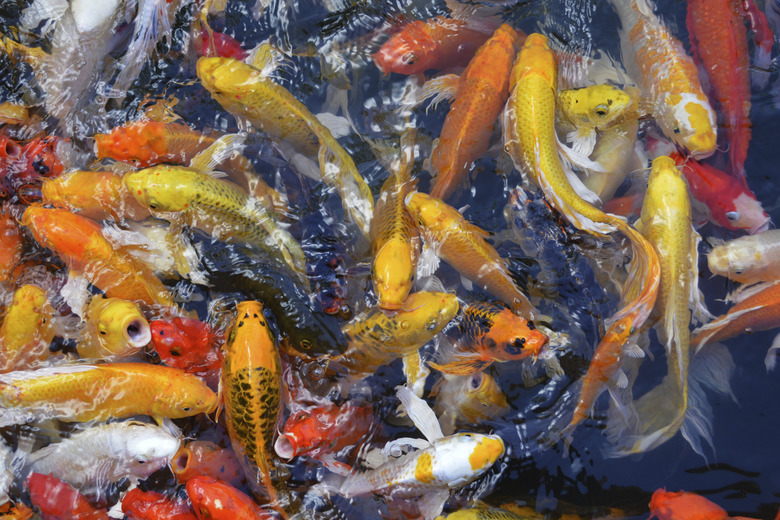How To Make Your Koi Grow Faster
You can encourage rapid growth in your koi by providing them a large, warm habitat and a high-quality diet. But regardless of the care you provide, their family trees may limit their growth rate and size. While they keep growing for most of their lives, the bulk of their growth occurs while they are young.
Food Is Fuel
Food Is Fuel
To maximize your koi's growth rate and ensure they are in peak health, you must feed them a high-quality diet. The bulk of their diet should come in the form of a commercial flake or pellet food, but supplement with vegetables, fruit, shrimp and tubifex worms. Use only commercial foods that are less than 30 percent protein content. Koi cannot store fat, so overfeeding will not accelerate their growth — it will only foul the tank. Ideally, you should feed your koi several small meals each day. During cold temperatures, their appetites will diminish, so offer less food than normal. When water temperatures are below 40 degrees Fahrenheit, cease feeding completely.
Huge and Healthy Habitat
Huge and Healthy Habitat
Large ponds tend to produce larger fish, so give your koi plenty of room to move. Spacious surroundings encourage exercise and natural foraging behaviors, which will both help to accelerate the growth of your koi. Additionally, keep the density of fish as low as possible — provide at least 250 gallons of water for each fish. It is especially important to provide a large habitat while the koi are less than 3 years old and growing at their most rapid rate. The water must be kept very clean to encourage rapid growth, so invest in a high-quality filtration unit.
Warmer Temperatures
Warmer Temperatures
Keep your koi warm to achieve the best growth rates possible. While koi adapt well to cool water temperatures, cold temperatures reduce their metabolic rate, which reduces their growth rate. For optimal growth, keep the water in your koi pond between 77 and 80 degrees Fahrenheit. First-year koi will grow better in a heated tank or a heated pond; after that, you may want to consider supplemental heat for ponds and aquariums if temperatures below 50 degrees persist for more than three months where you live. Heated water will keep their metabolism operating quickly and promote ravenous appetites.
Genetic Gifts
Genetic Gifts
Unfortunately, even if you provide them with perfect husbandry, some koi will not reach the sizes that others will. While the health of your koi plays a role in determining their growth rate and ultimate size, their genetic makeup is likely the most important single factor. While most koi eventually reach 20 inches in length, only those hailing from large-specimen lineages are likely to exceed 30 inches. Single-color specimens often reach larger sizes than multicolor specimens do.
